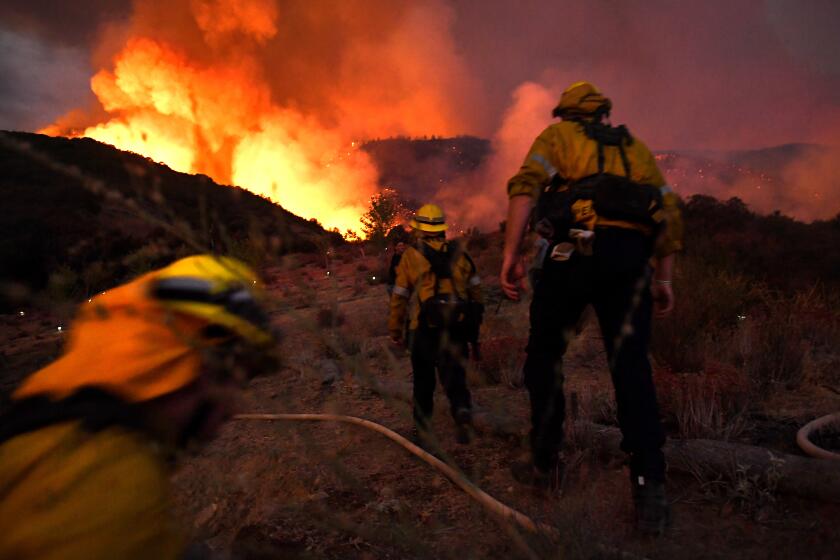Massive wildfires on the West Coast send haze to the East again

- Share via
PORTLAND, Ore. — The wildfires raging in the western United States, including the massive Bootleg blaze in Oregon and fires in California, are creating hazy skies as far away as New York as the infernos spew smoke and ash into the air in columns up to six miles high.
Skies over New York were hazy Tuesday as strong winds blew smoke east from California, Oregon, Montana and other states. The Bootleg fire grew to cover more than 600 square miles — half the size of Rhode Island. In California, the Tamarack and Dixie fires have also been wreaking havoc.
The smoke on the East Coast was reminiscent of last fall when large fires burning in California, Oregon and elsewhere in the West choked not only local skies with pea-soup smoke but also affected air quality several thousand miles away.
“We’re seeing lots of fires producing a tremendous amount of smoke, and ... by the time that smoke gets to the eastern portion of the country where it’s usually thinned out, there’s just so much smoke in the atmosphere from all these fires that it’s still pretty thick,” said David Lawrence, a meteorologist with the National Weather Service. “Over the last two years we’ve seen this phenomenon.”
Tony Galvez fled the Tamarack fire Tuesday with his daughter at the last minute and found out later that his home was gone.
“I lost my whole life, everything I’ve ever had. The kids are what’s going to matter,” he said as he fielded calls from relatives. “I got three teenagers. They’re going to go home to a moonscape.”
The El Dorado fire, sparked by a gender reveal party, resulted in the death of a firefighter.
The Oregon fire has ravaged the southern part of the state and has been expanding by up to four miles a day, pushed by gusting winds and critically dry weather that’s turned trees and undergrowth into a tinderbox.
Fire crews have had to retreat from the flames for 10 consecutive days as fireballs jump from treetop to treetop, trees explode, embers fly ahead of the fire to start new blazes and, in some cases, the inferno’s heat creates its own weather of shifting winds and dry lightning. Monstrous clouds of smoke and ash have risen up to six miles into the sky and are visible for more than 100 air miles.
Extremely dry conditions and heat waves tied to climate change have made wildfires harder to fight. Climate change has made the West much warmer and drier in the past 30 years and will continue to make weather more extreme and wildfires more frequent and destructive.
More to Read
Sign up for Essential California
The most important California stories and recommendations in your inbox every morning.
You may occasionally receive promotional content from the Los Angeles Times.














